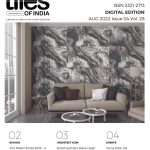The Round Tower
The Round Tower in Copenhagen, Denmark, is a living landmark, we explore…
The Round Tower, formerly, Stellaburgis Hafniens, is a 17th-century tower located in central Copenhagen, Denmark, and one of the many architectural projects of Christian IV of Denmark, built as an astronomical observatory. It is most noted for its equestrian staircase, a 7.5-turn helical corridor leading to the platform at the top (at 34.8 meters above ground), and for the expansive views that it affords over Copenhagen. The tower is part of the Trinitatis Complex which also provided the scholars of the time with a university chapel, the Trinitatis Church, and an academic library which were the first facilities of the Copenhagen University Library which had been founded in 1482.
The stones were brought to the site for the foundation, first from the city’s ramparts from 24 November 1636 and later from the area around Roskilde. Bricks were ordered from the Netherlands since local manufacturers could not meet the high-quality standards that were required. The Trinitatis Complex was set for construction in a crowded neighbourhood of narrow streets and alleyways. The foundation stone was laid on 7 July 1637. On several occasions construction work came to a standstill due to a shortage of funds. Churches in Denmark and Norway were therefore ordered to contribute a share of their earnings during the construction years.
In 1642, the tower was finally completed, though the church was completed only in 1657 and the library in 1657. Christian Longomontanus became the first director of the observatory. In the Great Fire of 1728, the Trinitatis Complex was severely damaged but was rebuilt. During the early 19th century, the Round Tower became outdated as an astronomical observatory. Instruments were growing still larger while the tower could not be expanded and, at the same time, light pollution from the surrounding city and vibrations caused by the ever-increasing traffic in the streets below had made the observations inaccurate.
The University, therefore, decided to build Stervold Observatory on the old bastioned fortifications of the city, which had become outdated and were being decommissioned. The new observatory was inaugurated in 1861 to the design of Christian Hansen. The Round Tower is a cylindrical tower built in the masonry of alternating yellow and red bricks, the colours of the Oldenburgs. The bricks used were manufactured in the Netherlands and are of a hard-burned, slender type known as muffer or mopper. On the rear side, it is attached to the Trinitatis Church, but it has never served as a church tower. Steenwinckel — whose name is otherwise synonymous with Dutch Renaissance architecture in Denmark — with the Trinitatis Complex has left his signature style.
Unlike his other buildings with their lavish ornamentations and extravagant spires, the complex is built to a focused and restrained design. Hans van Steenwinckel must have been up on the situation in Holland, cognizant that the style which he had once learned from Hendrick de Keyser had been altogether abandoned. The architects now setting the agenda in the Netherlands, masters such as Jacob van Kampen (Amsterdam City Hall), Pieter Post (Mauritshuis in the Hague) and Philip Vingboons, now favoured a style characterized by sobriety and restraint. It is now known as Dutch Baroque or sometimes Dutch Classicism. Its proponents often relied on theoretical works such as those of Andrea Palladio and of Jacopo Barozzi da Vignola.
Instead of stairs, a 7.5-turn spiral ramp forms the only accessway to the tower-top observatory as well as the Library Hall and the Bell-Ringer’s Loft, both located above the church. The ramp turns 7.5 times around the hollow masonry core of the tower before reaching the observation deck and observatory at the top, on the way also affords access to the Library Hall as well as the Ringer’s Loft. This design was chosen to allow a horse and carriage to reach the library, moving books in and out of the library as well as transporting heavy and sensitive instruments to the observatory.




GIPHY App Key not set. Please check settings